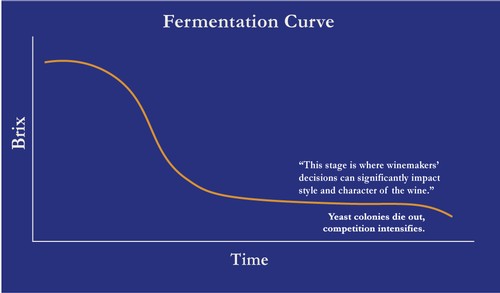Unveiling the Impact of Site and Yeast Diversity on Wine Fermentation
As wine connoisseurs, enthusiasts, or even occasional drinkers, we appreciate the distinct and unique flavors of different wines. There is an exciting complexity behind every bottle's journey from the grapes on the vine to the finished product in your glass. Let us venture into the world of fermentation, one of the key components that shape the character of your beloved bottle of wine.
Research has unveiled the unique nature of fermentation conducted by fruits from different sites. Even when fruits from various locations arrive on the same day, their fermentation process from a kinetic standpoint can differ quite remarkably. This includes factors like the temperature of fermentation, the time it takes to start, the demands for oxygen and nutrients it requires, and the time it takes to finish.
The microbial population diversity also affects the unique and distinctive qualities of a wine. It's not solely the well-known saccharomyces cerevisiae, a yeast commonly used in alcoholic fermentation, that holds the reins. The variety and quantity of different yeasts, their presence or absence at certain times, and the degree of their activity, all contribute to the final taste, aroma, and texture of the wine.
Traditionally, it was believed that incorporating a specific cultured yeast in fermentation would lead to a particular outcome. However, recent studies have shown that even under ideal conditions, there is only a roughly 70% chance that the chosen yeast will even survive until the end of the fermentation process. Many other yeast microbes could potentially play a role and influence the fermentation, making the results somewhat unpredictable and potentially enhance the complexity of the wine.
Addressing these uncertainties, winemakers are exploring different microbe combinations, sequential or late inoculations and spontaneous fermentations. The focus has shifted from sticking to the conventional of methods of single, high-dose isolated yeasts to instead focusing on the success of the fermentation process, regardless of how it is achieved.

You might perceive fermentation as a linear process, but it’s far from it. After the initial lag phase, there is an abrupt drop where most of the action occurs, followed by a long tail phase. During this phase, yeast colonies begin dying out, and the competition between the remaining colonies intensifies. This stage is where the magic happens and where winemakers' decisions can significantly impact the style and character of the wine. Factors like how often the wine is moved, the temperatures it is exposed to, and ways of dealing with suspended solids, can make a substantial difference. It could last from days to weeks and requires expert handling to ensure optimum results.
In the intricate world of winemaking, every phase holds its charm and relevance. The beauty of it lies not just in the end product but in appreciating the complexities of the process that brings the wine to life. So the next time you pour yourself a glass, remember the wonders of fermentation that have contributed to the delightful experience that is your favorite wine.
Follow along as we dive deeper into these topics, and so many more in the world of wine.